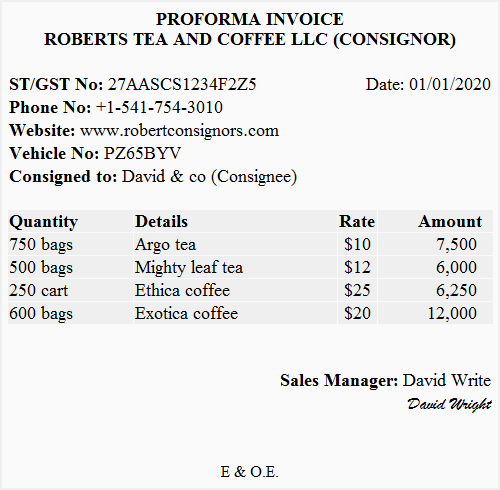Proforma invoice
Definition and explanation
A proforma invoice (also written as pro forma invoice) is one of the documents used in consignment business which contains information regarding the description of goods sent on consignment and the price at which those goods can be sold by the consignee. This document is prepared by consignor and sent to the consignee along with the goods.
The proforma invoice and invoice are not the same and should not be confused with each other. An invoice is sent by a seller to the buyer to provide him the details of goods sold or services provided to him, price of those goods or services and the agreed terms of payment. It indicates seller’s demand for payment after a sale has taken place. A proforma invoice, on the other hand, is not a demand for payment rather it is a memorandum invoice which tells what the actual invoice would be.
Where goods are consigned abroad, the proforma invoice plays an important role in custom clearance. The custom officer uses the information from proforma invoice in conjunction with the general physical examination of the goods to determine the total value of goods and the amount of imposable duty. Many international traders use consignment model of business and attach proforma invoices to their across-the-border shipments.
Format/template of proforma invoice
There are no specific rules or requirements that can be followed regarding the format or presentation of information in a proforma invoice. Typically, it includes the names of consignor and consignee, basic information about consignors business, quantity and quality of goods being consigned, details and description of goods and minimum acceptable sales price etc.
The document is signed by the consignor himself or an authoritative person who, in most cases, is the sales manager.

Upon receiving the goods and proforma invoice attached with them, the consignee performs a physical examination of the goods to see if their quantity as well as quality matches with the details laid down in the proforma invoice. If the consignee finds that the goods physically match with the details and description provided in the proforma invoice, he transports them to his godown, shop or selling outlet and tries to sell them at best possible price.
Periodically, the consignee keeps on informing the consignor about the sales made and expenses incurred by him in respect of the goods consigned to him. It is done through sending to the consignor a statement known as account sales.

Leave a comment